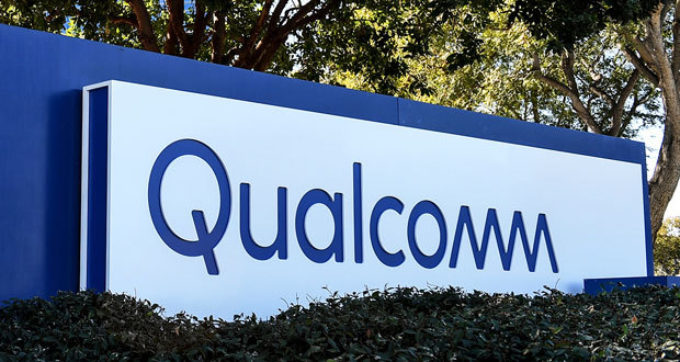F.T.C. v. Qualcomm, 411 F.Supp.3d 658, (N.D. Cal. 2019).
On September 25, the Federal Trade Commission (FTC) requested a rehearing en banc from the Ninth Circuit Court of Appeals in an antitrust case against Qualcomm.
A common challenge for those in the patent licensing business is patent exhaustion. Qualcomm’s solution to patent exhaustion is their decision not to license their rivals through its “no license, no chips” policy, where Qualcomm refuses to sell chips to a company that does not have a license to Qualcomm technology.
Rather than grant licenses for individual patents, Qualcomm grants Original Equipment Manufacturers (“OEMs”) a single license to practice a bundle of its patents. These bundles contain some patents that are known as Standard Essential Patents (“SEPs”)–patents that are necessary to practice a particular industry standard as determined by standard-setting organizations (“SSOs”) in the relevant field of art. Without a license to use SEPs, companies have trouble conducting business within the fields in which SEPs lie. As a result, SSOs contractually require those with SEPs to follow a “fair, reasonable, and non-discriminatory” (“FRAND”) policy.
Since OEMs are not rival chip manufacturers, “no license, no chips” allows Qualcomm to circumvent FRAND pricing constraints, meaning it charges above normal licensing fees. With “no license, no chips,” OEMs cannot buy Qualcomm technology at a cheaper price through purchasing chips from rival chip makers. Qualcomm gets supranormal licensing fees and circumvents the patent exhaustion problem.
The FTC found issue with Qualcomm’s “no license, no chips” policy and filed a complaint in early 2017 in the Northern District of California. The FTC claimed “no license, no chips” violates the Sherman Antitrust Act, specifically Sections 1 and 2, as it accused Qualcomm of monopolizing the chip market by refusing to grant licenses to rival chipmakers and for setting supranormal licensing fees in violation of FRAND regulations. Qualcomm’s competitors joined, arguing that “no license, no chips” was too restrictive, as they could not sell their chips to companies that did not have licenses. Additionally, OEMs like Apple that wanted to enter into 5G would have to pay steep licensing fees to gain access to Qualcomm products and work with Qualcomm exclusively. Besides its concern that the policy seemed monopolistic, the FTC observed that Qualcomm’s main source of profits was from OEMs who received Qualcomm licenses, meaning that the FTC determined licensing practices toward rival chip makers were intended to control the market.
After two years of litigation, Judge Lucy Koh released her decision. She ruled that “no license, no chips” was a violation of federal antitrust laws because Qualcomm’s practices squashed competition.
In August 2020, the Ninth Circuit overruled Koh’s decision by a unanimous three-judge panel ruling that “no license, no chips” did not violate antitrust laws, landing a big win for Qualcomm. The Court held that the Aspen Skiing exception, which said that a company has a duty to license its competitors if a company is (1) terminating a “voluntary and profitable course of dealing,” (2) “sacrific[ing] short-term benefits in order to obtain higher profits in the long run from the exclusion of competition,” and (3) involving products that are already sold in the existing market to other customers. The Court found that “no license, no chips” was “chip supplier neutral,” meaning that Qualcomm’s requirement that OEMs pay to license it patents before being eligible to purchase chips affects itself and its competitors all the same, so the policy did not violate the Sherman Antitrust Act. The decision clarified that Qualcomm was not required to license its competitors since it did not meet the circumstances of the Aspen Skiing exception to the general rule that companies are not required to deal with their competitors. Although the Ninth Circuit agreed with Koh’s observation that “no license, no chips” impacted consumers who paid higher prices for cell phones, consumers are not Qualcomm’s competitors, so under antitrust law, the company is not liable for any harm imposed on them. Other residual questions, such as the possible violation of FRAND rates, were not covered under antitrust law. If these issues are to be litigated, the Ninth Circuit held that they should be ruled under contract or patent law, not antitrust law.
The FTC requested to rehear the case en banc, raising the question of whether companies can disguise monopolistic practices as hypercompetitive ones. Thus, it would frame Qualcomm’s business model as a violation of antitrust law so long as Qualcomm is tied to some harm in a market other than that of its direct competitors. If the en banc hearing is denied or fails, the FTC also has the option to appeal up to the Supreme Court to raise the same questions.
Beyond the disagreement between the Northern District of California and Ninth Circuit Court of Appeals, the Supreme Court may be willing to hear the case since the final ruling might have broad implications for patent law. Rival companies would have broader access to rival patents under Koh’s remedies, but the access nevertheless raises concerns with patent exhaustion. Also, Koh’s decision would have implicated the international dealings of American companies and put them at a global disadvantage. Lastly, Koh opened the doors to consumers suing in class-action lawsuits if they are overcharged for hypercompetitive behavior.
